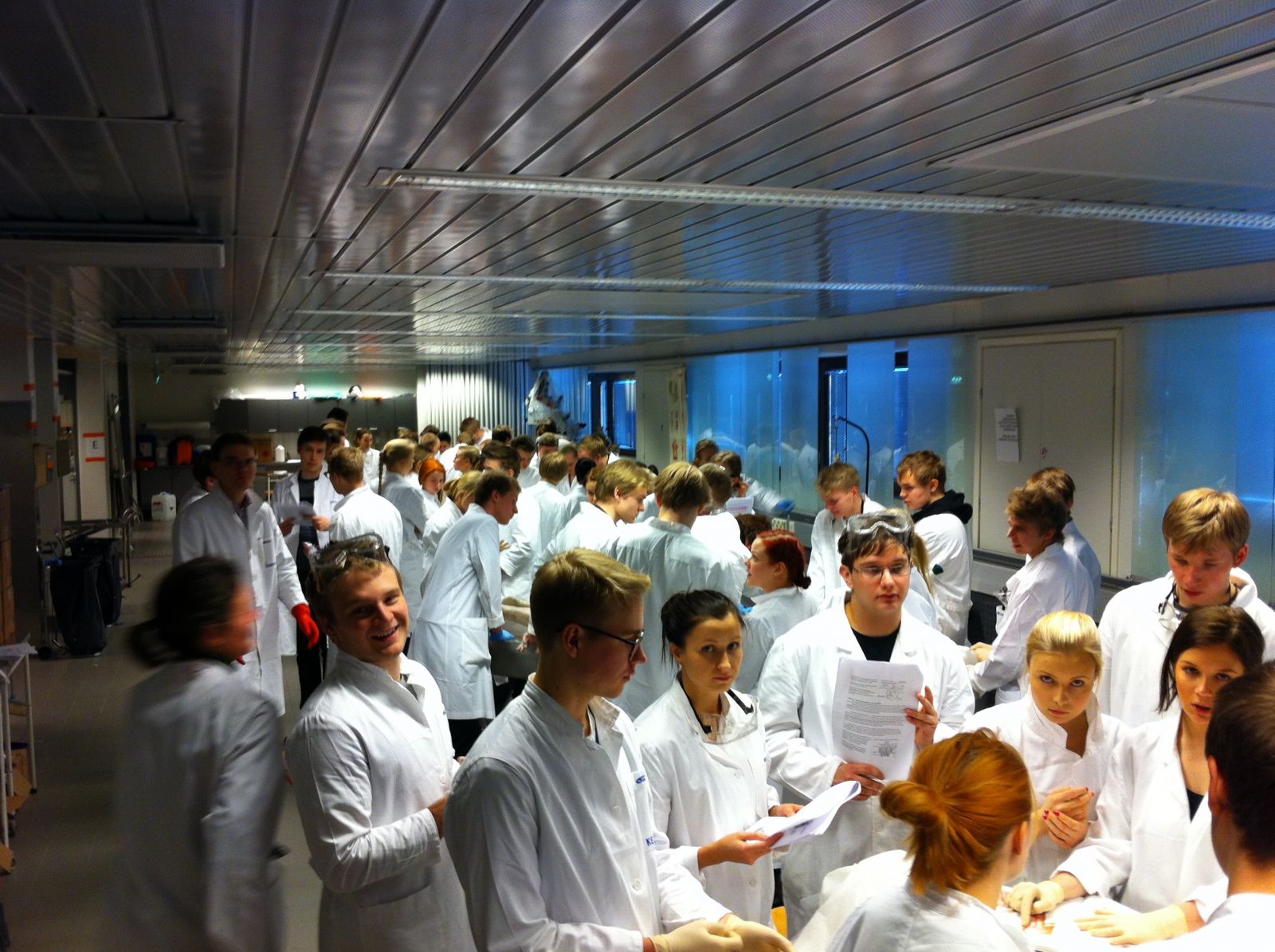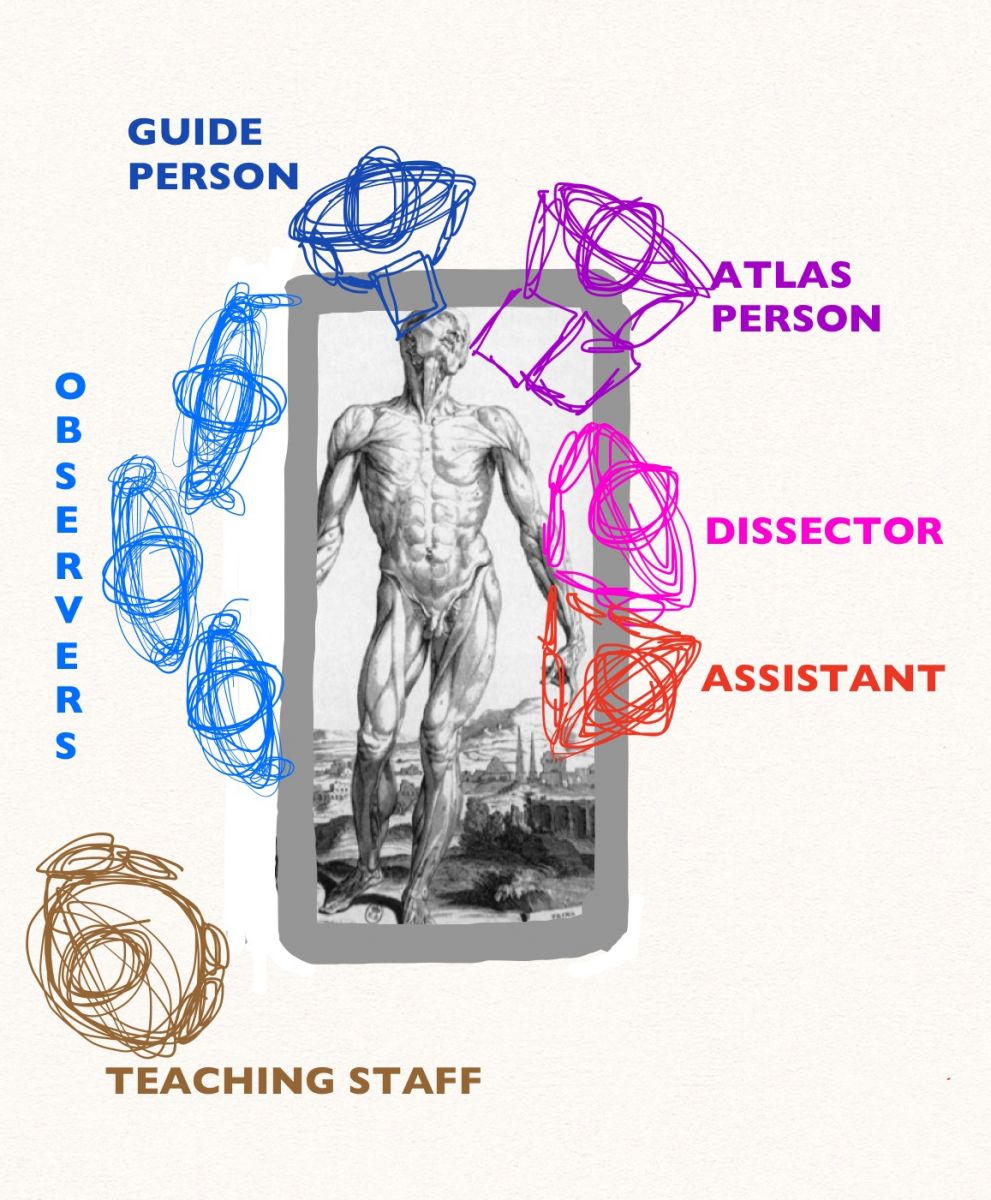
| Theme: 5BB Team Based Learning/Learning anatomy | |||
 |
||||||
| Importance of dissections in our anatomy curriculum Is it about details or concepts? |
 |
|||||
|
||||||
Importance of reflecting vs. doing for learning anatomy in the gross lab. Each student represented by a dot, y-axis is a linear scale.

5 % of students felt they learnt best when just observing the dissection
10 % felt their mainly learnt by dissecting themselves
54 % felt that all roles promoted learning
100 % thought that dissection helped them to learn anatomy as a whole and understand anatomical concepts.
42 % thought dissection was very helpful for learning details.
Different learners benefit from dissections.
The opportunity to reflect their knowledge and gain confidence is as important as the opportunity to cut apart.
We thank all the students who participated in this research. The Teachers' Academy University of Helsinki is acknowledged for financial support.
Johnson, J.H. 2002. Importance of dissection in learning anatomy: personal dissection versus peer teaching. Clinical anatomy 15:38-44.
Azer, S.A., Eizenberg, N. 2007. Do we need dissection in an integrated problem-based learning medical course? Perceptions of first and second-year students. Surg Radiol Anat 29: 173-180.



 Send Email
Send Email